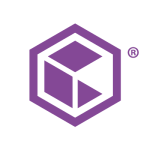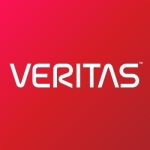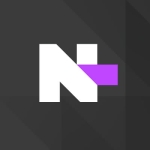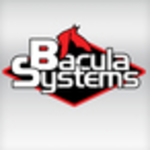What is our primary use case?
Currently, I'm working on a project in a desktop environment where this is one of the solutions that is being used. It is a public-cloud deployment model.
We are using this solution to back up VMs and data from our customers.
What is most valuable?
The most valuable feature of this solution is the integration with cloud services. I do not have to use an external application, such as Veeam, to back up files or VMs. It works like a standard backup, which is very useful when you want to provide a secure backup environment for your customer.
This solution allows me to restore either the VM or the data, depending on what is needed.
What needs improvement?
Technical support for this solution is good but it can still be improved.
The user interface is a little bit confusing and it could be better. It took some time to learn, although I was able to read about it and adapt. For a customer without backup experience, it will take longer to get used to. The same goes for customers without cloud backup experience because the options differ from what existed in their on-premises solution.
The price of this solution is something they should focus on improving.
The backend of this type of solution is complex, so stability and security can always be improved.
For how long have I used the solution?
I have been using this solution for three months.
What do I think about the stability of the solution?
This solution is stable and I haven't faced any issues while using it. It is as stable as Windows is, or as Linux is, so it is stable.
When I was working for HP we had our own private cloud for the customers, and it is not easy to stabilize everything, especially if you have several data centers around the world and you need to synchronize them. Once you add a new feature and it has to be deployed in all of them, it can be very messy.
What do I think about the scalability of the solution?
This is a scalable solution.
Usually, my customers are small to medium-sized businesses with between ten and fifty users.
How are customer service and technical support?
Technical support for this solution is very good. I can either ask questions in the forum or raise a call, and people reply to me right away. It is great.
I have used support from many big companies in the past, such as HP and Fuji. Also, when I first implemented this solution, people suggested that I do not take support from Microsoft. Rather, I should purchase a support contract from another company. I opted to test the Microsoft support, and I found that I am very satisfied with it. I would rate them between seven and eight out of ten.
Which solution did I use previously and why did I switch?
Previously, we used other backup solutions, but this is our first cloud backup solution. We used to use NetBackup and a backup solution from HP, but these were on-premises deployments.
We chose Microsoft for this solution because they developed a data center in Switzerland, and the people there gave me a good feeling about it. I am really satisfied with this solution and support.
How was the initial setup?
This is an easy solution to implement. I didn't need to obtain or read a lot of information. If you have experience in IT then you will find it easy to set up a basic configuration.
Deployment time for this solution depends on the environment. As an example, the last deployment that I performed was for a company with twenty-five users. It took five days to complete. Some of the time, of course, was spent in preparation. The deployment itself is really easy and short.
What about the implementation team?
I implement this solution for my customers.
What was our ROI?
It may take several years before a customer sees ROI, but they will immediately gain in terms of security, stability, and automation.
What's my experience with pricing, setup cost, and licensing?
The pricing of this solution is ok, but I'm expecting that the price will decrease in the future.
Which other solutions did I evaluate?
I have used many different backup solutions, and in my experience, none of them will do everything. Each of them has pros and cons. You have to choose a backup solution based on several aspects including your knowledge, the price, the license, the support, how long the backup will be deployed, the agent, the stability, the scalability, and what it is that you are backing up. For example, in the past, the HP solution that I used did not support backing up a mailbox.
For our customers, we only needed a simple backup solution. With Azure Backup, it was easy because I didn't have to search for an external solution. I did not have high expectations, but it matched them and does what I need it to.
What other advice do I have?
I came from a Unix environment in the past, and I was not really a Microsoft or Windows users. Now, however, I'm more confident with Microsoft products. I worked for HPE for a long time in a private cloud environment, and I really appreciate services that are well-integrated with each other and can be used right away, without having a great deal of Microsoft experience.
There are some services that different customers do not require, but everybody needs to have a backup solution as a prerequisite, whether they operate on-premises on in the cloud.
This is a simple backup solution. To understand, you can consider Unix as an example. We used to have a single backup command that worked from the command line interface, and it was sufficient. Then, dedicated backup applications were released. They were more complex with new features, handled new infrastructure, and handled new applications, but with that came bigger expectations. In this case, my expectations are small and Azure backup is sufficient for my customers. If tomorrow, for example, the customer's requirements change, then I may advise them to use Veeam, NetApp Cloud Backup, or another solution.
My advice to anyone who is implementing this solution is to test the restore process regularly and to manage the backup of the data depending on the certainty of the restore. Even if the backup completes successfully and is stable, it doesn't mean that the data is not corrupted. This is the same advice that I would give for an on-premises backup. Be vigilant on that.
When it comes to this type of solution, sometimes you have to dedicate a specific engineer for a long time. They will train themselves and know everything about the backup. They will be able to troubleshoot and answer questions about the solution.
I would rate this solution a seven out of ten.
Disclosure: My company has a business relationship with this vendor other than being a customer. Partner.















